2016 Fantasy Baseball: The Revitalization of Chris Tillman

Chris Tillman has pretty much been the definition of league-average from 2013 to 2015. In that time he had a 3.96 ERA compared to the MLB-average 4.01. So, definitely OK, but not very exciting. In 2016 Tillman has, in 10 starts, been quite better than average. In fact, his 2.61 ERA ranks 18th among all qualified starters, and his 3.09 FIP ranks 19th. His 4.00 xFIP tells a different story, but I’ll get to that in a little bit. Are there real changes here that say Tillman should remain a mainstay in your rotation? Or should you try to sell high?
This year Tillman is throwing a nice combination of five pitches: a four-seamer 41 percent of the time; a sinker 14 percent; a changeup 15 percent; a curve 15 percent; and a cutter 15 percent. The change and curve have remained relatively stable usage-wise over the time he’s used them. The first change I want to note is in this graph:
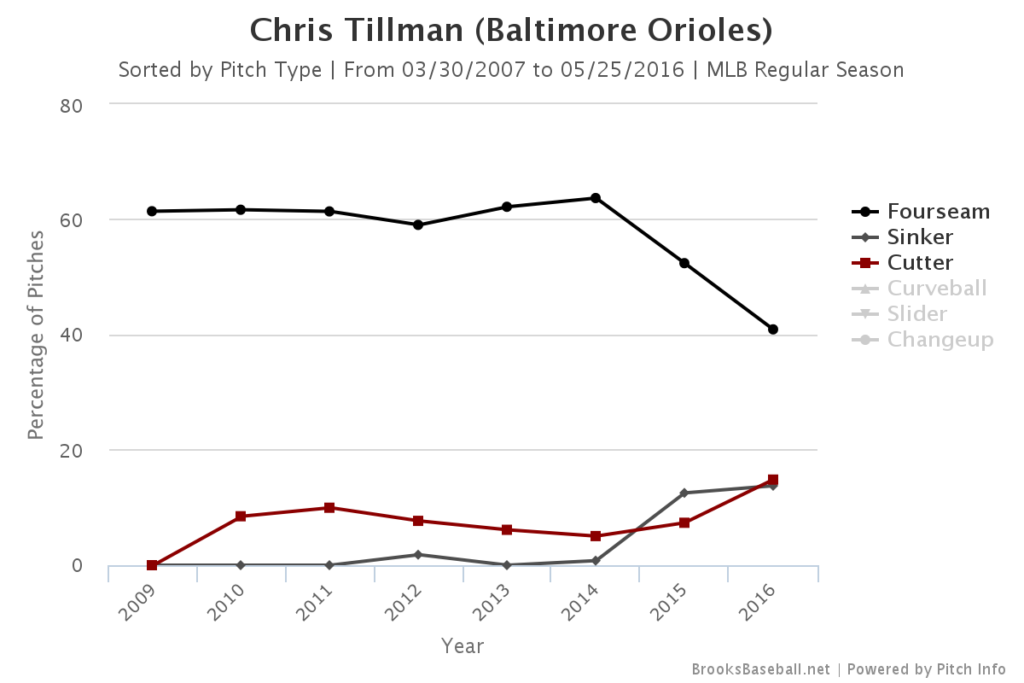
I focus on the four-seam, sinker and cutter, because those are the pitches that Tillman has changed the most. Tillman’s four-seam usage has dropped from around 60 percent to 52 percent to 40 percent this year. After barely using a sinker in his first six seasons, Tillman began throwing one last year 12 percent of the time; now he’s throwing it 14 percent of the time. Finally, after throwing the cutter about 7 percent of the time pre-2016, he’s upped its usage to almost 15 percent this season.
Tillman has decreased his usage on his four-seamer, and that’s a good thing. For his career, other than the changeup it’s Tillman’s pitch most likely to be hit for a home run, and, correspondingly, has the highest isolated power mark for hitters. With the decreased usage of the fastball, Tillman has seen a good rise in velocity on the heater:
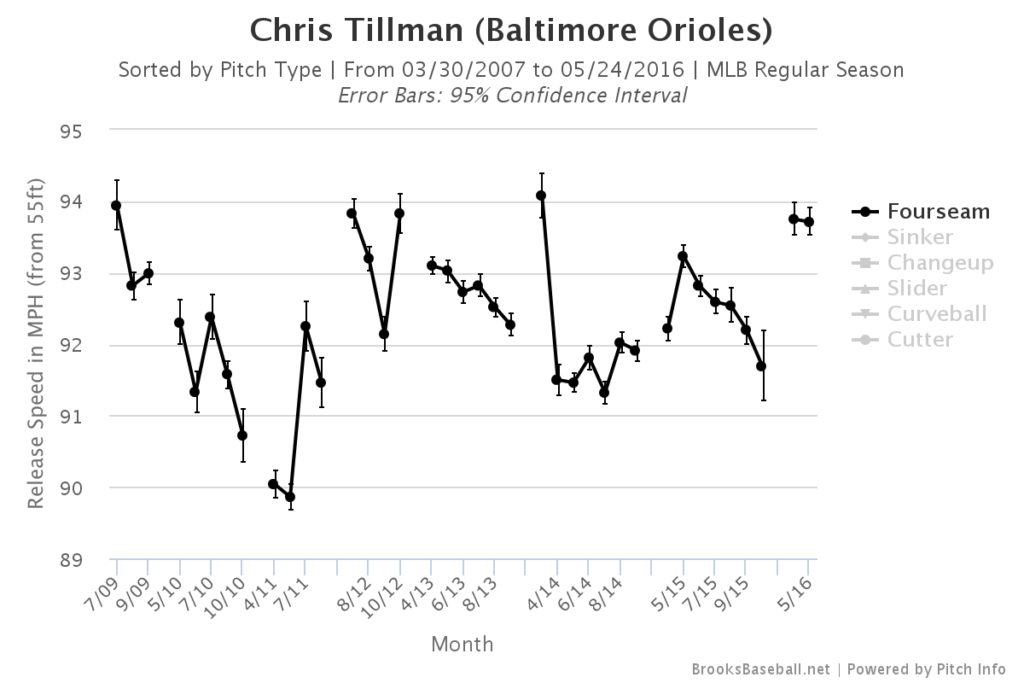
This is the first time Tillman has held his velocity almost at 94 mph for consecutive months. Also, in his first seven seasons the fastball was the pitch most likely to be hit for a fly ball by opponents. This year, opponents are hitting his fastball in the air only 20 percent of the time, which is good for Tillman and can help partially explain his career-best home run rate:
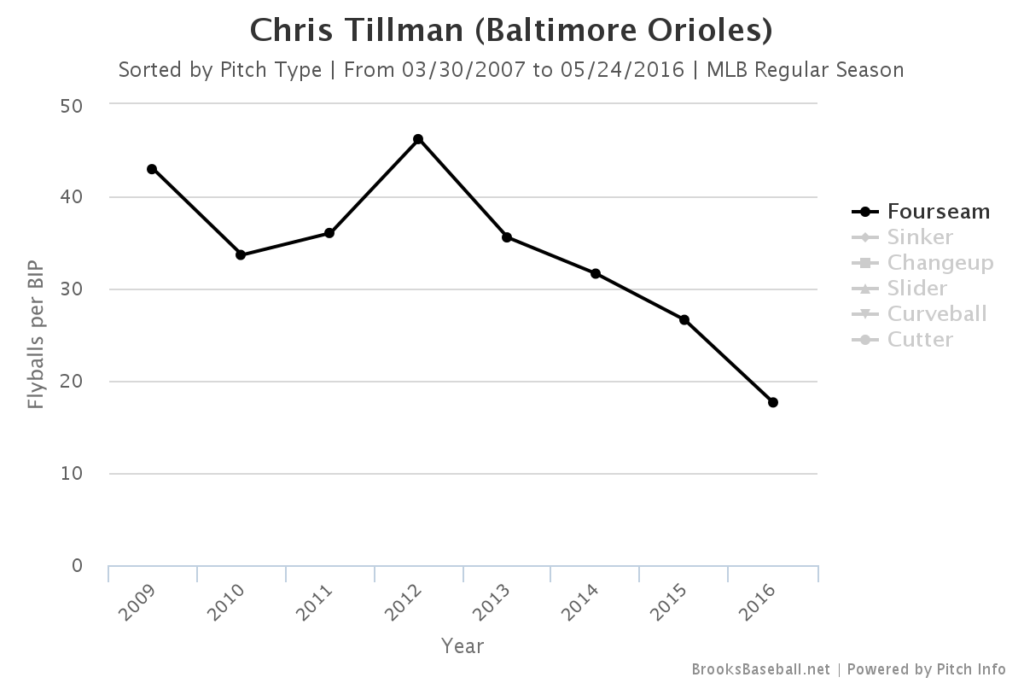
Tillman’s 4 xFIP screams regression, but his improved pitch mix should continue to help him control his home runs allowed. As noted above, Tillman is using a cutter a career-high amount this season at 15 percent of the time. That’s good, because when he throws the cutter he gets a whiff 32 percent of the time, which makes his cutter his second-best swing-and-miss pitch. When Tillman ends an at-bat with a cutter, he gets a strikeout almost 35 percent of the time, which is his best mark on any pitch ending an at-bat. He has 17 strikeouts and only two walks using the cutter to end an at-bat in 49 opportunities.
Finally, one more change that shows me this is a new Tillman is what he’s done to his delivery. On these next graphs I show only the fastball, because A.) it’s his most used pitch still and B.) to keep the graph easy to read. Tillman has changed his horizontal release point by almost 3/4 a foot pre-2015 and his vertical release point by almost four inches from pre-2015 to this season:
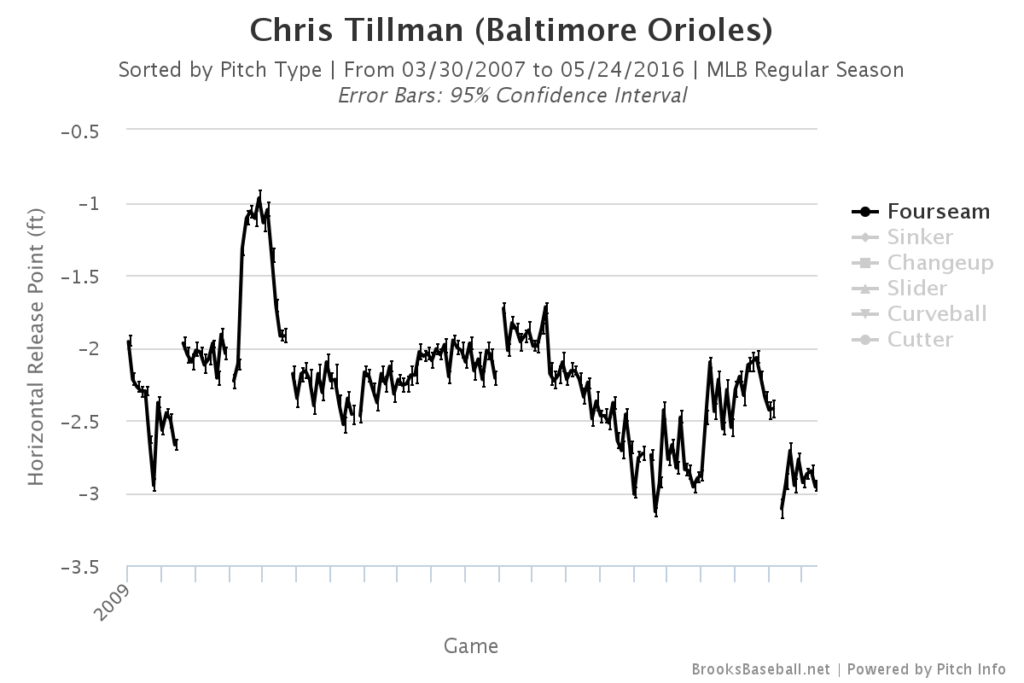
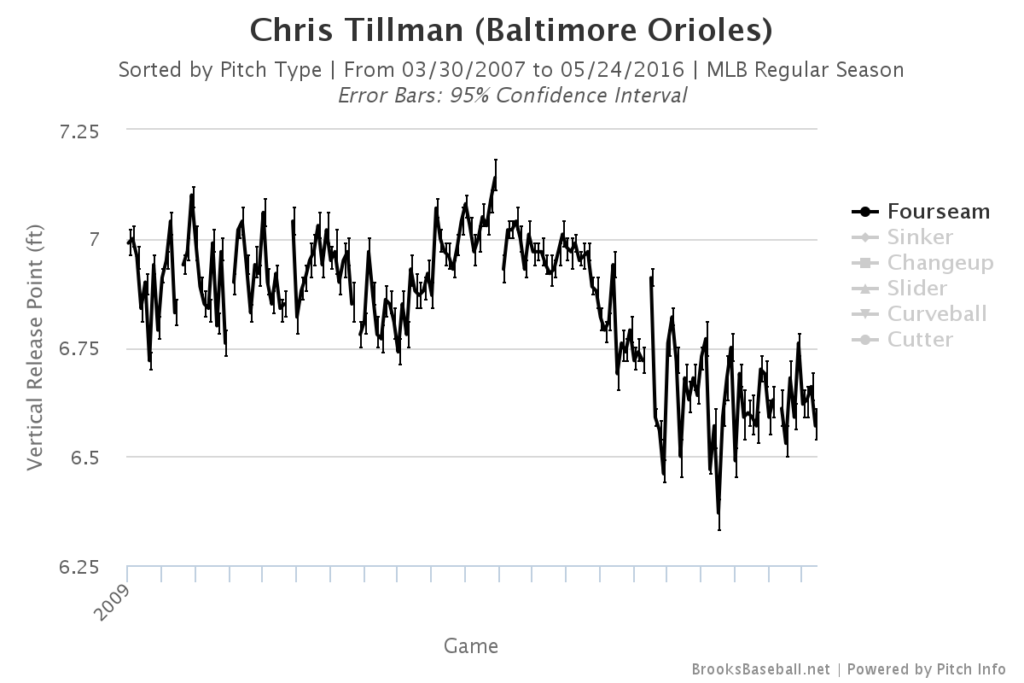
These changes show me Tillman isn’t just getting lucky. He’s made mechanical adjustments and changes to his pitch mix to become a better pitcher. He just turned 28 and is posting a career-best strikeout rate and K%-BB% thanks to higher usage of a cutter and smarter use of his other pitches. Pitching in the AL East, Tillman probably won’t finish with an ERA under 3, but he’s not someone you should sell high on.





